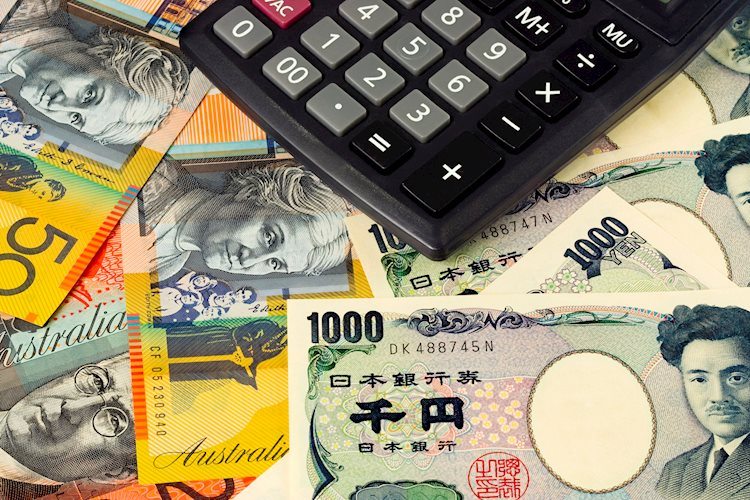
- AUD/JPY rises as the Australian Dollar receives support from strong commodity prices.
- The ASX 200 Index rose by 0.48% to around 8,230 on Tuesday due to improved mining and energy stocks.
- Traders speculate that the BoJ might postpone raising rates until April, as it seeks sustained wage growth before taking action.
AUD/JPY gains ground for the second successive day, trading around 97.60 during the European hours on Tuesday. The upside of the AUD/JPY cross is attributed to the improved Australian Dollar (AUD) amid strong commodity prices.
The S&P/ASX 200 Index also increased by 0.48% to around 8,230 on Tuesday, snapping a three-day losing streak. Mining and energy stocks led the recovery, while Australian shares followed overnight gains on Wall Street, where investors shifted focus from megacap tech stocks to other sectors.
Additionally, the AUD/JPY cross appreciates as the risk-sensitive AUD receives support from risk-on sentiment following reports about US President-elect Donald Trump’s economic team considering a gradual increase in import tariffs boosted investor confidence.
According to Bloomberg, Trump’s incoming administration is evaluating a phased approach to implementing tariffs, aiming to prevent a sharp rise in inflation while managing trade policy adjustments.
Moreover, the Japanese Yen (JPY) faces pressure amid uncertainty over the timing of the Bank of Japan’s (BoJ) next rate hike. Market participants speculate that the BoJ may delay raising rates until April, awaiting confirmation of sustained wage growth during the spring negotiations.
Bank of Japan Deputy Governor Ryozo Himino stated on Tuesday that he would not directly link President Trump’s inauguration address to the BoJ’s decision on whether to raise rates in January. Himino emphasized that when the right time comes, the BoJ must adjust its policy without delay.
Regarding Trump’s address, Himino expressed the intention to closely analyze the schedule and balance of the new US administration’s policy measures and to see if any new information not previously communicated would emerge.
Risk sentiment FAQs
In the world of financial jargon the two widely used terms “risk-on” and “risk off” refer to the level of risk that investors are willing to stomach during the period referenced. In a “risk-on” market, investors are optimistic about the future and more willing to buy risky assets. In a “risk-off” market investors start to ‘play it safe’ because they are worried about the future, and therefore buy less risky assets that are more certain of bringing a return, even if it is relatively modest.
Typically, during periods of “risk-on”, stock markets will rise, most commodities – except Gold – will also gain in value, since they benefit from a positive growth outlook. The currencies of nations that are heavy commodity exporters strengthen because of increased demand, and Cryptocurrencies rise. In a “risk-off” market, Bonds go up – especially major government Bonds – Gold shines, and safe-haven currencies such as the Japanese Yen, Swiss Franc and US Dollar all benefit.
The Australian Dollar (AUD), the Canadian Dollar (CAD), the New Zealand Dollar (NZD) and minor FX like the Ruble (RUB) and the South African Rand (ZAR), all tend to rise in markets that are “risk-on”. This is because the economies of these currencies are heavily reliant on commodity exports for growth, and commodities tend to rise in price during risk-on periods. This is because investors foresee greater demand for raw materials in the future due to heightened economic activity.
The major currencies that tend to rise during periods of “risk-off” are the US Dollar (USD), the Japanese Yen (JPY) and the Swiss Franc (CHF). The US Dollar, because it is the world’s reserve currency, and because in times of crisis investors buy US government debt, which is seen as safe because the largest economy in the world is unlikely to default. The Yen, from increased demand for Japanese government bonds, because a high proportion are held by domestic investors who are unlikely to dump them – even in a crisis. The Swiss Franc, because strict Swiss banking laws offer investors enhanced capital protection.


